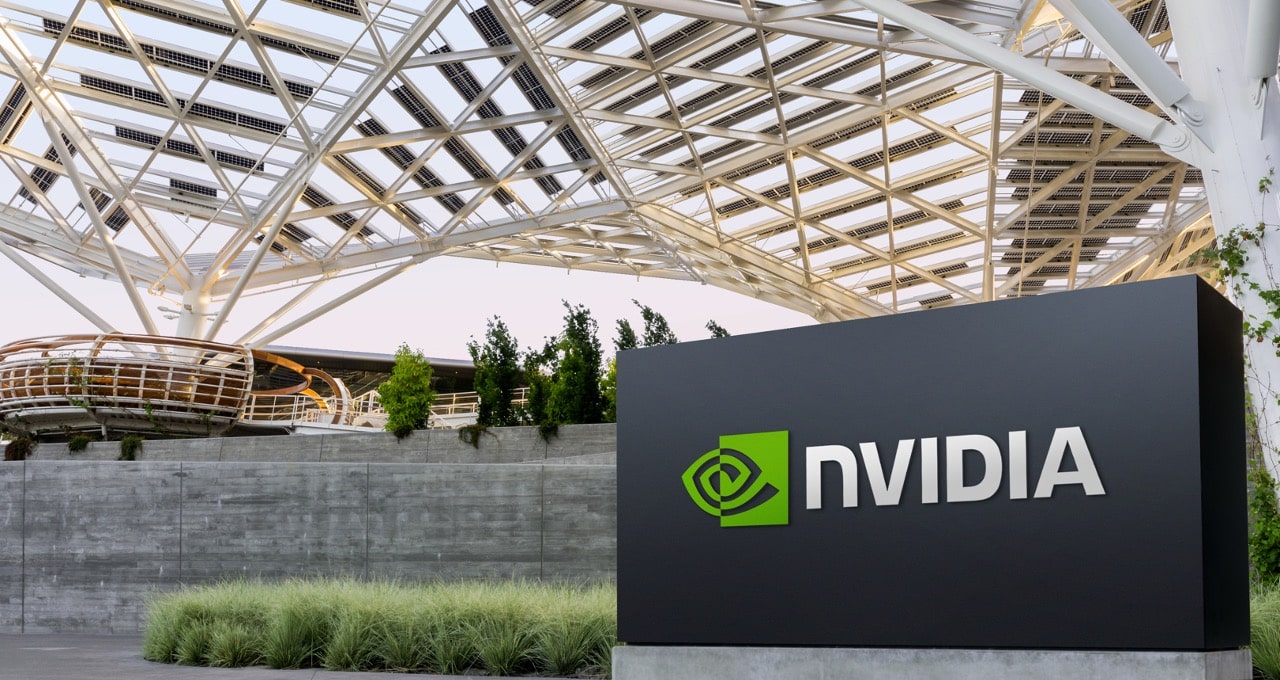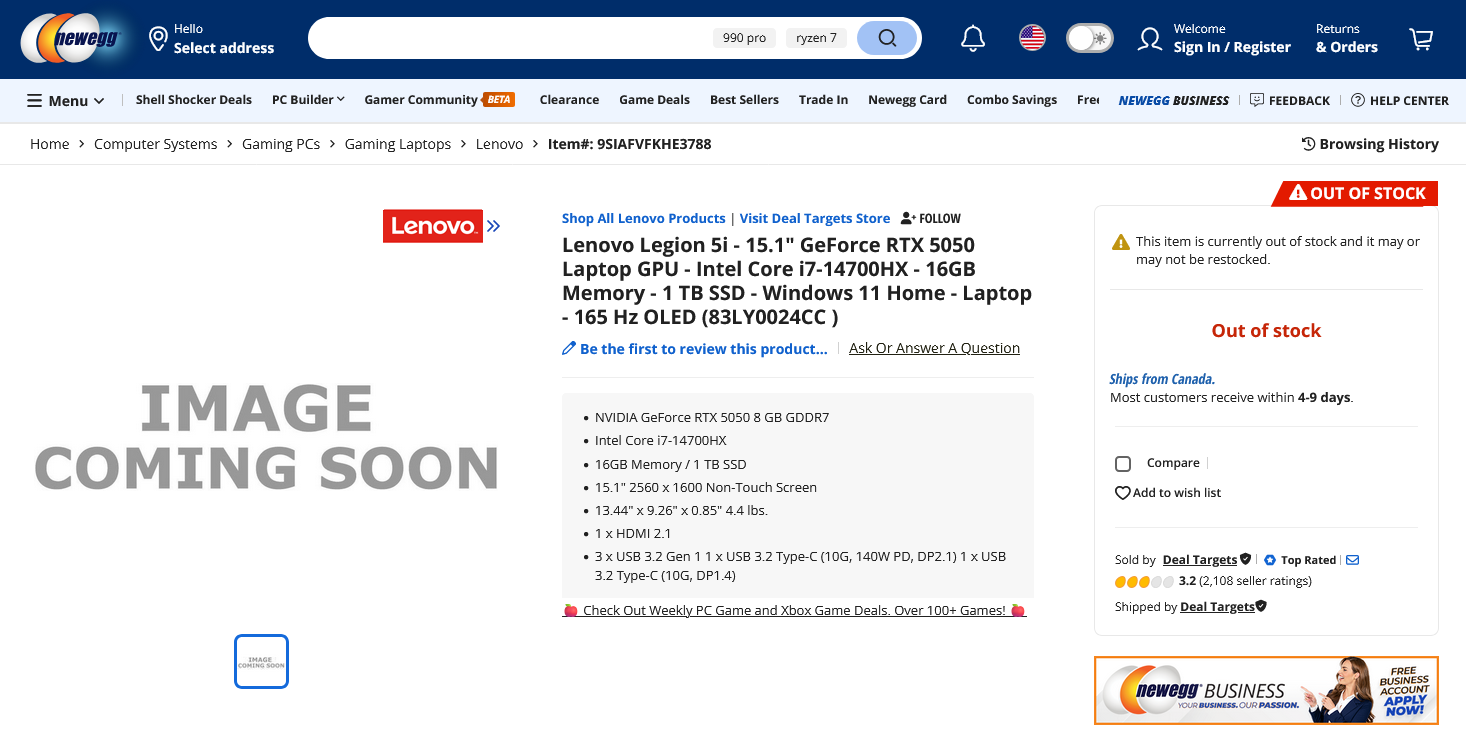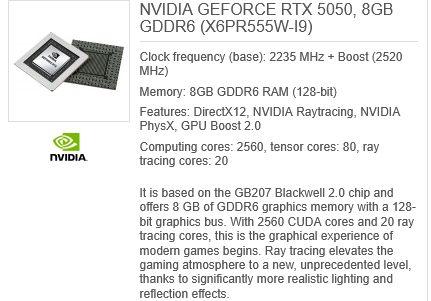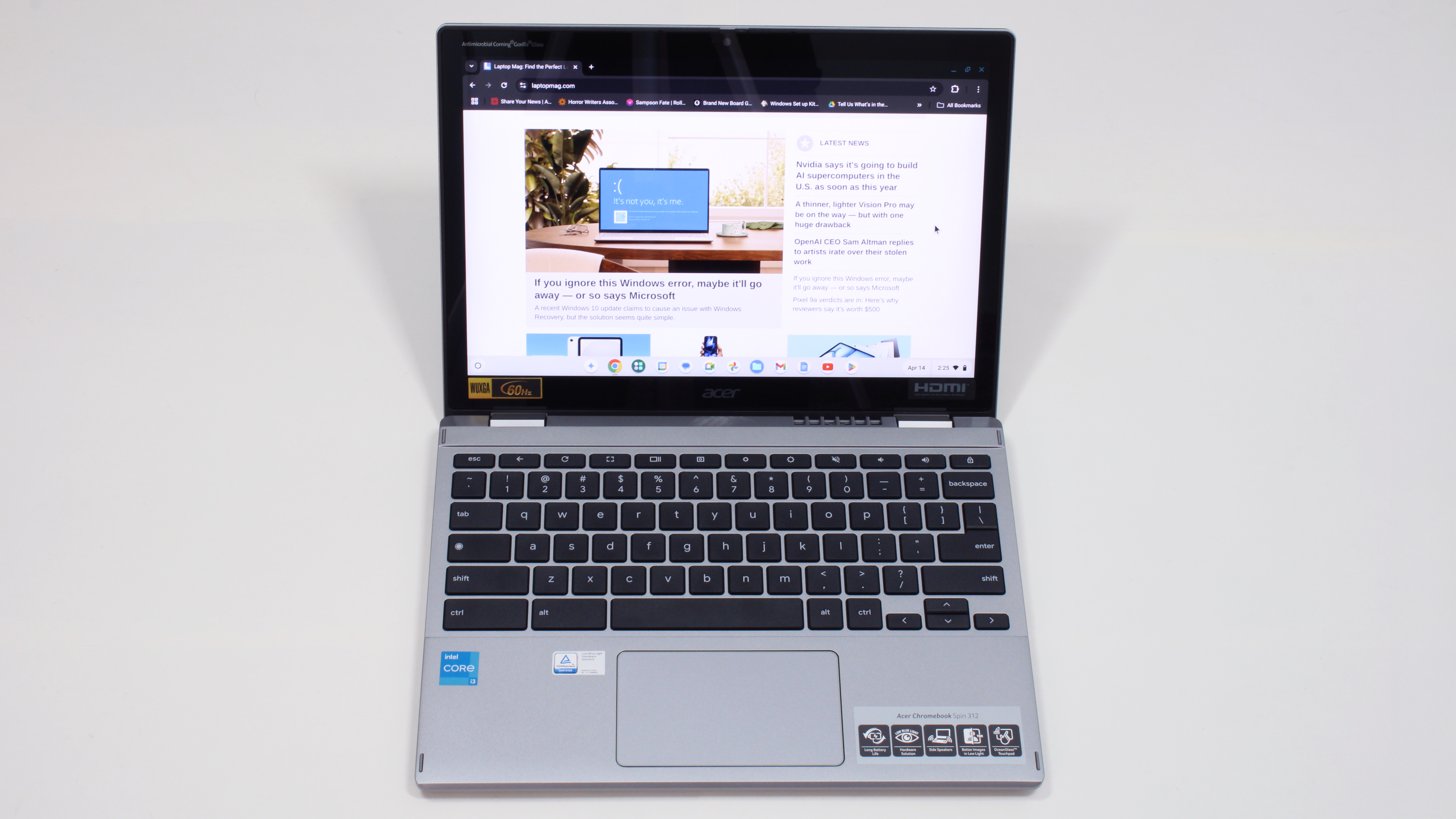Nvidia RTX 5050 GPU leaks suggest a generational leap at a budget price
This 50-class GPU might be the sleeper hit of Nvidia’s next-gen laptop line-up.

The RTX 5050 Mobile is Nvidia’s upcoming entry-level GPU for laptops. Based on new leaks, this GPU looks far more capable than its “budget” tier would suggest.
Though Nvidia hasn't officially announced its specs, the chip has already appeared in product pages from Acer, HP, and Lenovo, with models like the Acer Nitro 5, HP Victus 16, and Lenovo Legion 5i all slated to include it.
The RTX 5050 Mobile is built on the new Blackwell architecture, marking a clean break from the RTX 4050 Mobile’s Ada Lovelace foundation. While the RTX 5050 shares the same CUDA ("Compute Unified Device Architecture") core count as its predecessor (2,560), everything else -- from the memory configuration to the clock speeds -- suggests this new chip represents a generational leap in capability. And this generational jump is available for an affordable price.
The specs were accidentally leaked by the German IT company Kiebel (via momomo_us).
Those specs point to two distinct RTX 5050 Mobile variants. Most laptops will ship with an 8GB GDDR6 configuration running at up to 100W TGP.
However, a second version reportedly pairs the same core GPU with 8GB of faster GDDR7 memory. This version appears in a handful of higher-end laptops, including the Asus ROG Strix G16 and Lenovo Legion 5 Pro engineering builds.
It may allow for improved bandwidth and power efficiency in demanding workloads, but for now, take all that with a pinch of salt.
Sign up to receive The Snapshot, a free special dispatch from Laptop Mag, in your inbox.
https://t.co/AucXbmEbHY pic.twitter.com/5iJOH8DaKJJune 10, 2025
According to the leaked specs, which surfaced in a retailer listing, the RTX 5050 is expected to include 20 RT cores, 80 Tensor cores, 8GB of GDDR6 memory on a 128-bit bus, and clock speeds up to 2.52GHz.
Power draw ranges from 60W to 100W, depending on the chassis. It also gains access to Nvidia’s latest Max-Q 4.0 power optimization stack. That’s the same efficiency-boosting tech used in the higher-end 5070 and 5090 mobile chips.

Blackwell brings gains where it counts
The 50-class tier has traditionally been where Nvidia cuts corners, often stripping memory, limiting bus widths, and dialing down RT performance. That made previous “entry-level” GPUs like the RTX 3050 or 4050 tough sells, especially for gamers looking to push modern titles with ray tracing enabled or DLSS turned on.
But the RTX 5050 changes that equation. Thanks to Blackwell’s improved power management and architectural upgrades, Nvidia is delivering more performance in the same power envelope, or less. It’s a smarter GPU, not just a faster one.
Thanks to Blackwell’s improved power management and architectural upgrades, Nvidia is delivering more performance in the same power envelope, or less.
Early analysis suggests the 5050 offers a ~45% uplift over the 4050 in raw FP32 compute power, aided by its wider memory bus (128-bit vs 96-bit), higher clock speeds, and more VRAM. With 8GB of GDDR6, it avoids the memory bottlenecks that hampered the 6GB RTX 4050 in some games and creative apps.
More importantly, Blackwell’s efficiency translates into real-world advantages. Frame generation, DLSS 4, ray-traced lighting, and AI-assisted game logic all benefit from the updated Tensor cores and 4th-gen RT units, even in a chip this size.

Performance expectations
While we don’t have official benchmarks yet, we know enough to put the RTX 5050 Mobile in context.
It’s faster than the RTX 4050 Mobile in nearly every metric that matters. It runs cooler, clocks higher, and offers significantly better bandwidth. Thanks to DLSS 4 and increased memory headroom, games that struggled to hold 60 fps at 1080p on the 4050, especially with ray tracing enabled, should fare far better on the 5050.
In some cases, it could even approach RTX 4060 Mobile performance levels, especially in thin-and-light laptops where the 4060 is power-constrained. When configured at 100W in larger machines like the Legion 5 or Nitro 18, the 5050 may even outperform a 4060 running at 65W.
GPU | Architecture | Cores | Memory | Bus | TGP |
|---|---|---|---|---|---|
RTX 4050 Mobile | Ada Lovelace | 2560 | 6GB GDDR6 | 96-bit | 35–65W |
RTX 5050 G6 Mobile | Blackwell | 2560 | 8GB GDDR6 | 128-bit | 60–100W |
RTX 4060 G7 Mobile | Blackwell | 2560 | 8GB GDDR7 | 128-bit | 80–115W |
RTX 4060 Mobile | Ada Lovelace | 3072 | 8GB GDDR6 | 128-bit | 60–115W |
That’s not to say it’s a 4060 killer — it isn’t. The 4060 still has more CUDA cores (3,072 vs. 2,560) and a higher theoretical ceiling. However, the gap is much smaller than the model numbers imply. And in real-world gaming at 1080p, especially with DLSS and frame generation, the 5050 could close that gap further.
Which laptops are getting it?
This is where the RTX 5050 gets interesting.
OEMs aren’t treating this like a bargain-bin GPU. Acer, HP, and Lenovo have all listed RTX 5050 configurations in laptops that span midrange to premium territory. That includes gaming-focused machines like the Nitro 5, Legion 5i, and Victus 16, but also prosumer ultrabooks like the LG Gram Pro 16 and IdeaPad Pro 5. These systems will mostly use the standard GDDR6 version, but we expect higher-tier designs to quietly adopt the GDDR7 variant as a performance differentiator.
Acer’s Nitro line-up confirms multiple RTX 5050 configurations, with some using a 60W TGP and others going as high as 100W. That’s a critical detail. The 5050’s performance will vary significantly depending on how much power it’s allowed to draw. A 60W version will struggle to match a 4060. A 100W version might trade blows with it.
Expect pricing in the $1,199 to $1,499 range at launch, though GDDR7-equipped models could push closer to the $1,600–$1,700 mark depending on CPU and chassis pairing.
The bottom line?
The RTX 5050 Mobile isn’t a cut-down afterthought. It’s not a recycled 4050. It’s a thoughtfully tuned, architecture-first evolution that delivers next-gen features in laptops that won’t require a second mortgage.
Thanks to Blackwell’s efficiency gains and smarter feature integration, Nvidia has finally given the 50-class a reason to exist beyond marketing. The RTX 5050 offers legitimate 1080p gaming chops, full ray tracing and DLSS 4 support, and enough VRAM to future-proof budget laptops. And with the GDDR7 variant waiting in the wings, this might be the most dynamic 50-class release Nvidia has ever shipped.
Buyers will still need to shop carefully. Not every RTX 5050 laptop will unlock its full potential, and some may be priced too close to 5060 models for comfort. But in the right system, the RTX 5050 Mobile could be the best value GPU of 2025.
More from LaptopMag

Luke is a freelance writer and journalist. Although his background is in legal, he has a personal interest in all things tech, especially hardware and microelectronics, and anything regulatory. Aside from Laptop, he contributes to publications including All About Circuits and EE Power.
